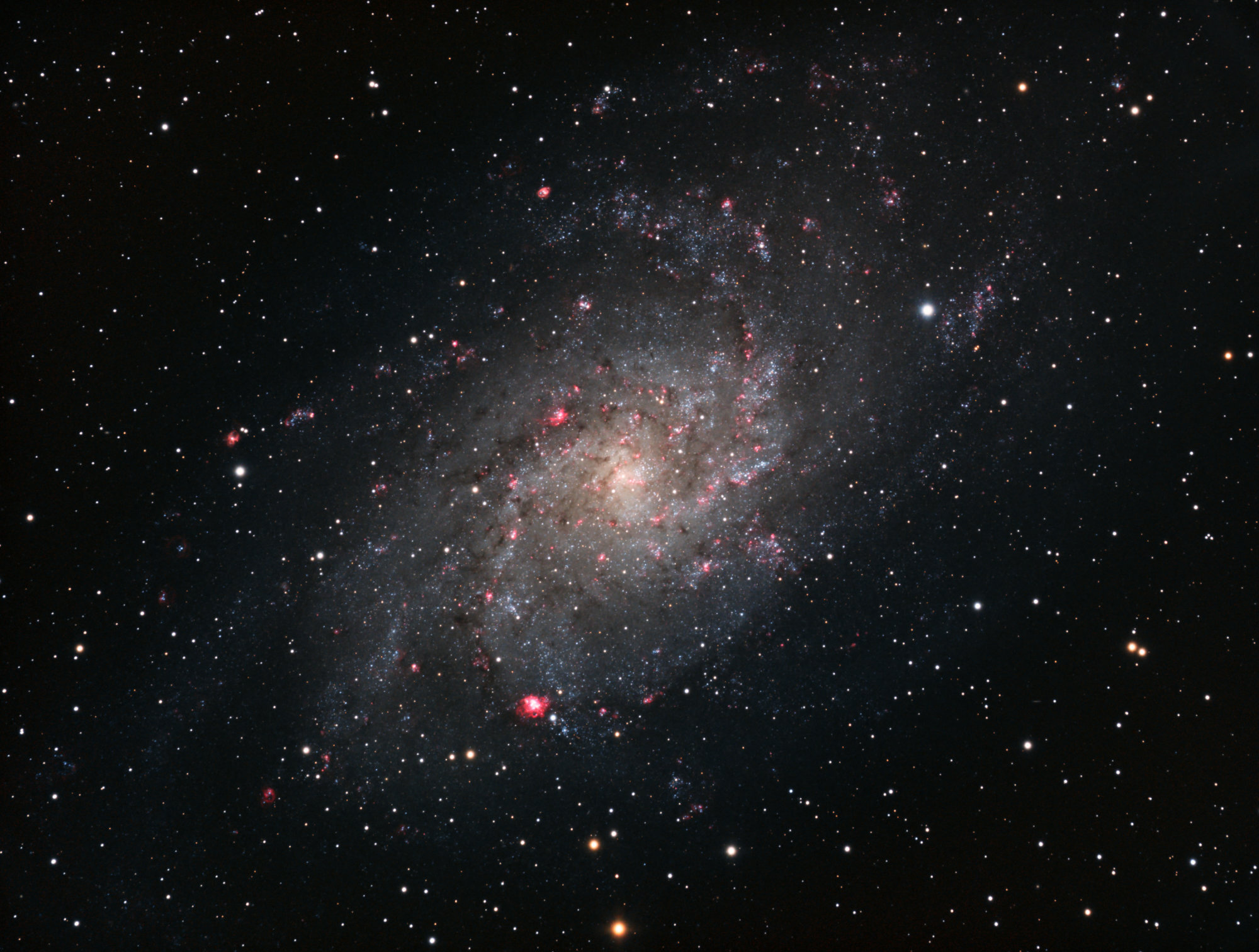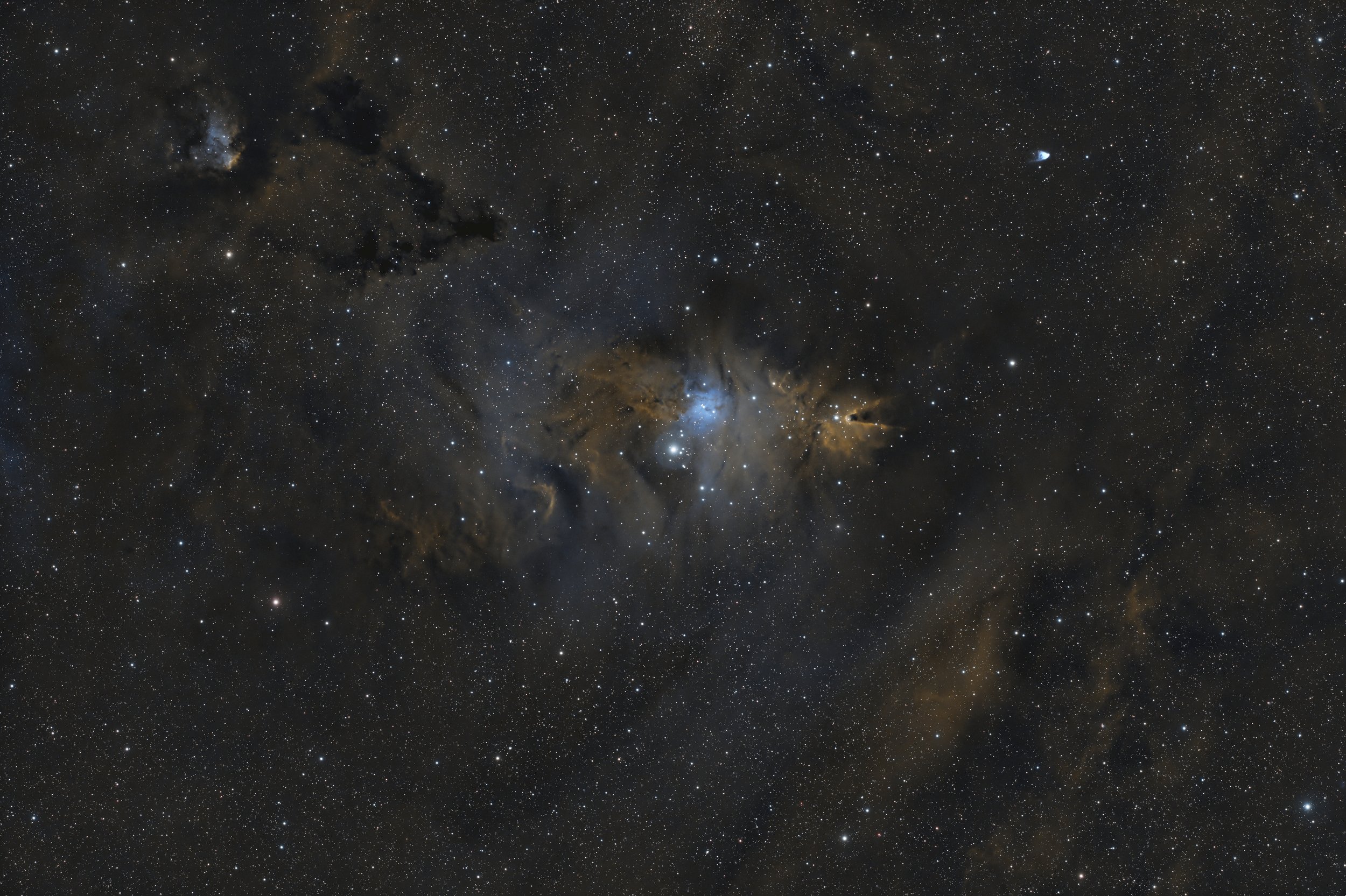
Images
Galactic objects and solar system elements in the form of final images.
Use the filter section on the right to select the objects of interest
M45 - Pleiades
M45 is a well-known object in the night sky. The large bright blue stars and the surrounding illuminated clouds make for an attractive target. While traveling this was a perfect object to photograph with the recently assembled 60mm travel rig.
Comet C/2023 P1 (Nishimura)
An exciting object on the very early morning horizon in August/September 2023, comet C/2023 P1 Nishimura. A very short observation window unfortunately, due to its close proximity to the sun. But just enough to make a half hour image of this fast traveller through our solar system.
Sh2-252 - Monkey Head Nebula
The Monkey Head Nebula is a very nice narrowband target for when the moon is out. Located in the constellation of Orion, this is a typical winter target. While clouds interfered a lot with the imaging, over several nights about 7h of exposure could be gathered for this image.
M16 - Eagle Nebula
A new travel rig was put together and first light was used to image M16, the Eagle nebula. This is a low summer target and only half an hour of data could be gathered. But the travel setup worked well and holds a lot of promise for the future.
Sh2-174 - Valentine Rose
Sh2-174 is a very faint planetary nebula and also known as Valentine Rose. In total 12h of H-alpha and OIII data was collected to create this final image.
Sh2-220 - California Nebula
NGC1499 (California Nebula), an emission nebula located in the constellation Perseus is a very large and colourful target when photographed in narrow-band. Here an SHO image of long exposure to bring out some of the very faint blue OIII signal.
Comet C/2022 E3 (ZTF) 2/2
On 01 February the comet reached its closest proximity to Earth. A few hours of clear skies allowed to capture this moment as a second image
NGC2264 - Cone Nebula
A wide-field image of NGC2264, or Cone Nebula, embedded in lots of hydrogen-alpha regions. Next to the actual cone is the Christmas Tree star cluster, illuminating the surrounding gasses to emit bright blue OIII signal.
Comet C/2022 E3 (ZTF) 1/2
Comet C/2022 E3 (ZTF) is one of the brighter comets this year. It is still increasing in brightness, and while not likely, it could still possibly become visible with the naked eye. This post describes the image itself and also contains an animation of the comet moving across the backdrop of the stars.
M74 - Phantom Galaxy
M74, also known as the Phantom Galaxy, is about 32 million light-years away from Earth. The galaxy contains two clearly defined spiral arms and is therefore used as an archetypal example of a grand design spiral galaxy.
M1 | Sh2-244 - Crab Nebula
The Crab Nebula is a supernova remnant and pulsar wind nebula in the constellation of Taurus. Imaged here in a Hubble Palette. This is the first image using BlurXTerminator for deconvolution, which is nothing short of a revolution in PixInsight image processing.
Sh2-236 - Tadpoles Nebula
The Tadpoles nebula is a very characteristic nebula in the constellation Auriga. This narrow-band image in Hubble palette clearly shows where this emission nebula gets its name from.
NGC7789 - Caroline’s Rose
NGC 7789 is an open cluster in Cassiopeia that was discovered by Caroline Herschel in 1783. She was the sister of the well known William Herschel. When looking at this object visually the loops of stars and dark lanes give the impression of a rose, that’s what gave it the nickname Caroline’s Rose.
Caldwell 7
A beautiful spiral galaxy, also known as ‘little M33’. Photographed in sessions two years apart, but all combined into one LRGB image, enhanced with H-alpha data indicating areas of active star formation within the galaxy.
Sh2-248 - Jellyfish Nebula
The beautiful Jellyfish nebula (IC443) in the constellation Gemini. Here in a wide-field shot together with reflection nebula IC444. The narrow-band images are processed in the SHO Hubble palette.
Moon
On the very first night testing out the new Mewlon-180c, some short videos were shot of the Moon. After processing the video-files using the new software PlanetarySystemStacker, this moon image came out. Certainly a motivation to do a lot more moon photography and test the Mewlon on some of the planets.
Caldwell 4 - Iris Nebula
An image of NGC7023, captured on three different occasions, two(!) years apart. The bright blue reflection nebula is referred to as Iris Nebula, named after the similarly blue flower. With more than 17h of exposure also the darker nebulae are visible.
NGC7822 - Cederblad 214
In the constellation Cepheus this large area of nebulosity can be found with a massive star, 100,000 times bigger than our Sun, in the center that lights up the whole cloud. The nebula is registered as NGC7822.




















